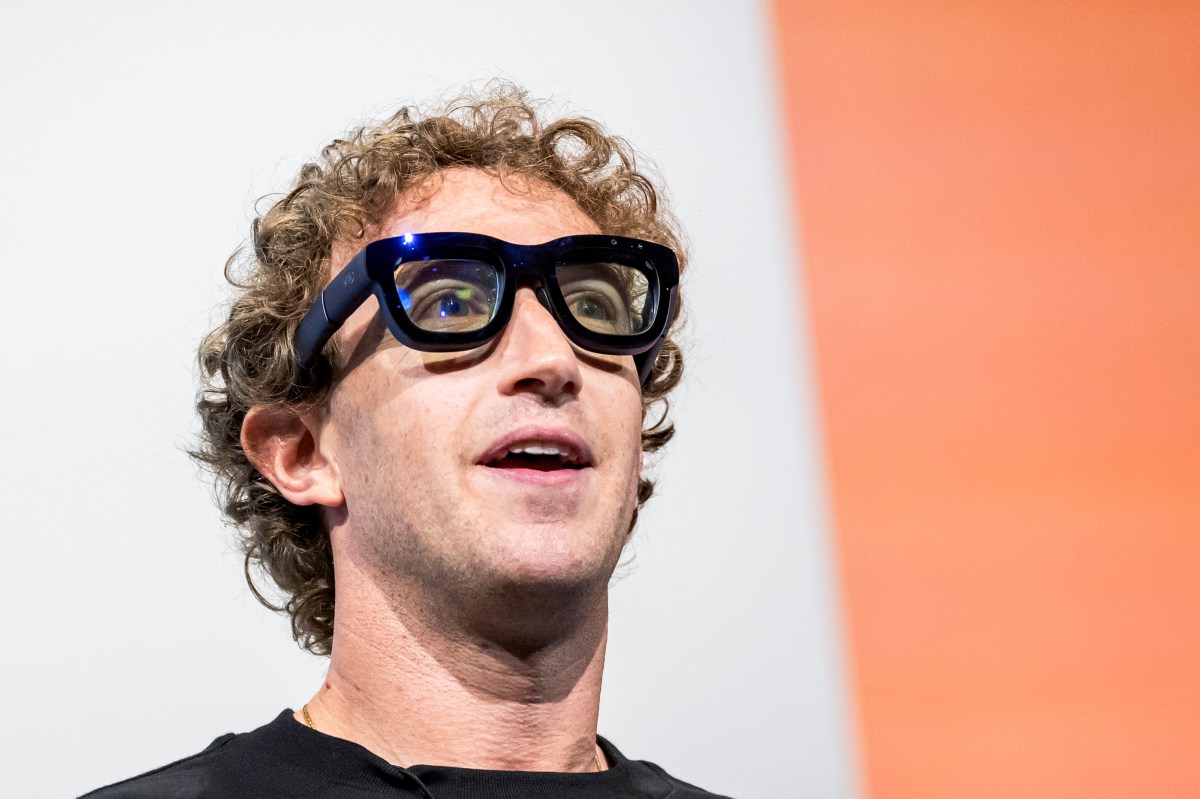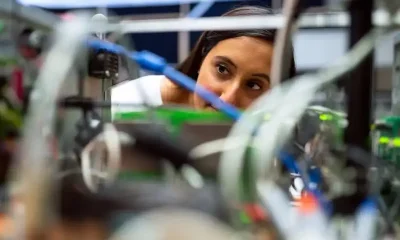Technology
Despite recent layoffs, Meta is expanding in India

Meta made headlines last month for announcing plans to cut 5% of its employees, controversially deeming them “low performers.” But the job cuts aren’t holding Meta back from expanding in certain geographic areas.
Meta is setting up a new site in the country’s tech hub of Bengaluru (formerly known as Bangalore), multiple Meta employees posted on LinkedIn this month.
Meta is currently hiring for 41 positions there, according to its careers webpage, most of which were posted over the last month. The positions are split between software or machine learning engineer jobs, and roles focused on designing chips for Meta’s data centers.
Meta Bengaluru is looking for an “experienced Engineering Director to build and lead our engineering team in India,” one of Meta’s job ads, which was posted three weeks ago on LinkedIn, reads.
The engineering director in Bengaluru will be responsible for designing a strategy to hire and build founding engineering teams, plus help create “a vision for engineer teams in India,” the job ad states.
The new center is part of Meta’s Enterprise Engineering team, according to a Meta employee’s LinkedIn post. That team focuses on custom internal Meta tools, rather than on Meta’s best-known products like Facebook and Instagram.
While Meta has several existing offices in India, including Bengaluru, Hyderabad, Gurgaon, New Delhi, and Mumbai, most have fewer job openings and they’re mainly for non-engineering roles. Only 1 of the 12 available positions at the other locations is engineering-related, Meta’s careers page shows.
A Meta spokesperson in India told TechCrunch that it is recruiting for a “small number of engineering positions in Bengaluru.”
“We regularly update our location strategies to support our long-term investments,” the spokesperson said.
The 41 positions in Bangalore are a small proportion of Meta’s global job postings, which currently total over 1,700. But it represents a shift for Meta, which has not traditionally used India as an engineering hub — those positions have historically been based in North America and Europe.
In one example from 2022, an Indian software engineer made headlines after he was laid off by Meta just two days after relocating to Canada for the job.
Meta CEO Mark Zuckerberg has said that Meta intends to backfill the jobs it cut during its most recent round of layoffs.
Technology
Did xAI lie about Grok 3’s benchmarks?

Debates over AI benchmarks — and how they’re reported by AI labs — are spilling out into public view.
This week, an OpenAI employee accused Elon Musk’s AI company, xAI, of publishing misleading benchmark results for its latest AI model, Grok 3. One of the co-founders of xAI, Igor Babushkin, insisted that the company was in the right.
The truth lies somewhere in between.
In a post on xAI’s blog, the company published a graph showing Grok 3’s performance on AIME 2025, a collection of challenging math questions from a recent invitational mathematics exam. Some experts have questioned AIME’s validity as an AI benchmark. Nevertheless, AIME 2025 and older versions of the test are commonly used to probe a model’s math ability.
xAI’s graph showed two variants of Grok 3, Grok 3 Reasoning Beta and Grok 3 mini Reasoning, beating OpenAI’s best-performing available model, o3-mini-high, on AIME 2025. But OpenAI employees on X were quick to point out that xAI’s graph didn’t include o3-mini-high’s AIME 2025 score at “cons@64.”
What is cons@64, you might ask? Well, it’s short for “consensus@64,” and it basically gives a model 64 tries to answer each problem in a benchmark and takes the answers generated most frequently as the final answers. As you can imagine, cons@64 tends to boost models’ benchmark scores quite a bit, and omitting it from a graph might make it appear as though one model surpasses another when in reality, that’s isn’t the case.
Grok 3 Reasoning Beta and Grok 3 mini Reasoning’s scores for AIME 2025 at “@1” — meaning the first score the models got on the benchmark — fall below o3-mini-high’s score. Grok 3 Reasoning Beta also trails ever-so-slightly behind OpenAI’s o1 model set to “medium” computing. Yet xAI is advertising Grok 3 as the “world’s smartest AI.”
Babushkin argued on X that OpenAI has published similarly misleading benchmark charts in the past — albeit charts comparing the performance of its own models. A more neutral party in the debate put together a more “accurate” graph showing nearly every model’s performance at cons@64:
Hilarious how some people see my plot as attack on OpenAI and others as attack on Grok while in reality it’s DeepSeek propaganda
(I actually believe Grok looks good there, and openAI’s TTC chicanery behind o3-mini-*high*-pass@”””1″”” deserves more scrutiny.) https://t.co/dJqlJpcJh8 pic.twitter.com/3WH8FOUfic— Teortaxes▶️ (DeepSeek 推特🐋铁粉 2023 – ∞) (@teortaxesTex) February 20, 2025
But as AI researcher Nathan Lambert pointed out in a post, perhaps the most important metric remains a mystery: the computational (and monetary) cost it took for each model to achieve its best score. That just goes to show how little most AI benchmarks communicate about models’ limitations — and their strengths.
Technology
The pain of discontinued items, and the thrill of finding them online

We’ve all been there. A favorite item is suddenly unavailable for purchase. Couldn’t the manufacturer have given you advance warning?
Whether owing to low sales, changing habits, production costs, or even because something is a little wrong with your favorite product (shh), discontinued items are part of life. In a weekend piece, the New York Times delves into the not-so-dark underbelly of online places where shoppers find these items, share tips and yes, find emotional support.
The story highlights a padded laptop bag made by Filson that a super fan now hunts “down everywhere” to snag as many as possible “before everyone figures out how great they are.” It points to Discontinued Beauty, a site whose offerings are old to visitors but new to the site. Among its latest products: an “essential protein restructurizer” by Redkin priced at an eye-popping $169.95. (The newest version of the product costs shoppers $32.)
Could it be dangerous to use these discontinued products? Who cares, suggests one creative director, who tells the Times about a lip pencil the beauty company NARS no longer sells and she has found elsewhere. “Now, do I know the proper way to store this for optimal conditions? No,” she says. “They’re under my sink.”
Technology
US AI Safety Institute could face big cuts

The National Institute of Standards and Technology could fire as many as 500 staffers, according to multiple reports — cuts that further threaten a fledgling AI safety organization.
Axios reported this week that the US AI Safety Institute (AISI) and Chips for America, both part of NIST, would be “gutted” by layoffs targeting probationary employees (who are typically in their first year or two on the job). And Bloomberg said some of those employees had already been given verbal notice of upcoming terminations.
Even before the latest layoff reports, AISI’s future was looking uncertain. The institute, which is supposed to study risks and develop standards around AI development, was created last year as part of then-President Joe Biden’s executive order on AI safety. President Donald Trump repealed that order on his first day back in office, and AISI’s director departed earlier in February.
Fortune spoke to a number of AI safety and policy organizations who all criticized the reported layoffs.
“These cuts, if confirmed, would severely impact the government’s capacity to research and address critical AI safety concerns at a time when such expertise is more vital than ever,” said Jason Green-Lowe, executive director of the Center for AI Policy.
-

 Technology8 months ago
Technology8 months agoTop 10 Technologically Advanced Countries and Their Products
-

 Technology7 months ago
Technology7 months agoWBTC (Wrapped Bitcoin)
-

 Technology8 months ago
Technology8 months agoDogecoin (DOGE) Cryptocurrency
-

 Technology9 months ago
Technology9 months agoTop 10 Trending Laptops Of 2024
-

 Technology7 months ago
Technology7 months agoEverything To Know About Litecoin As A Cryptocurrency
-

 Technology7 months ago
Technology7 months agoBKK:BCH Coin
-

 Technology8 months ago
Technology8 months agoCardano (ADA) Coin, Everything To Know
-

 Technology7 months ago
Technology7 months agoTron (TRX) Coin
